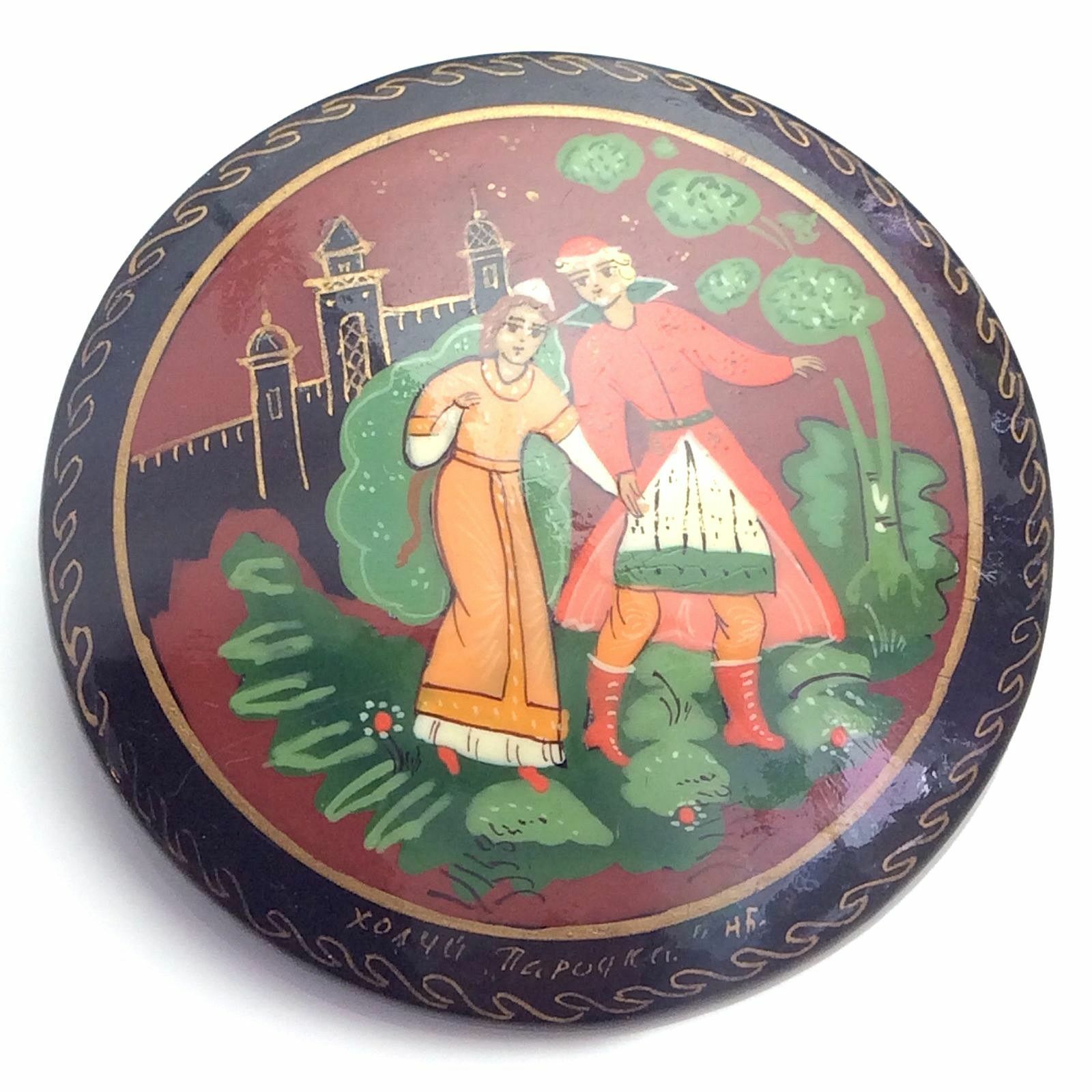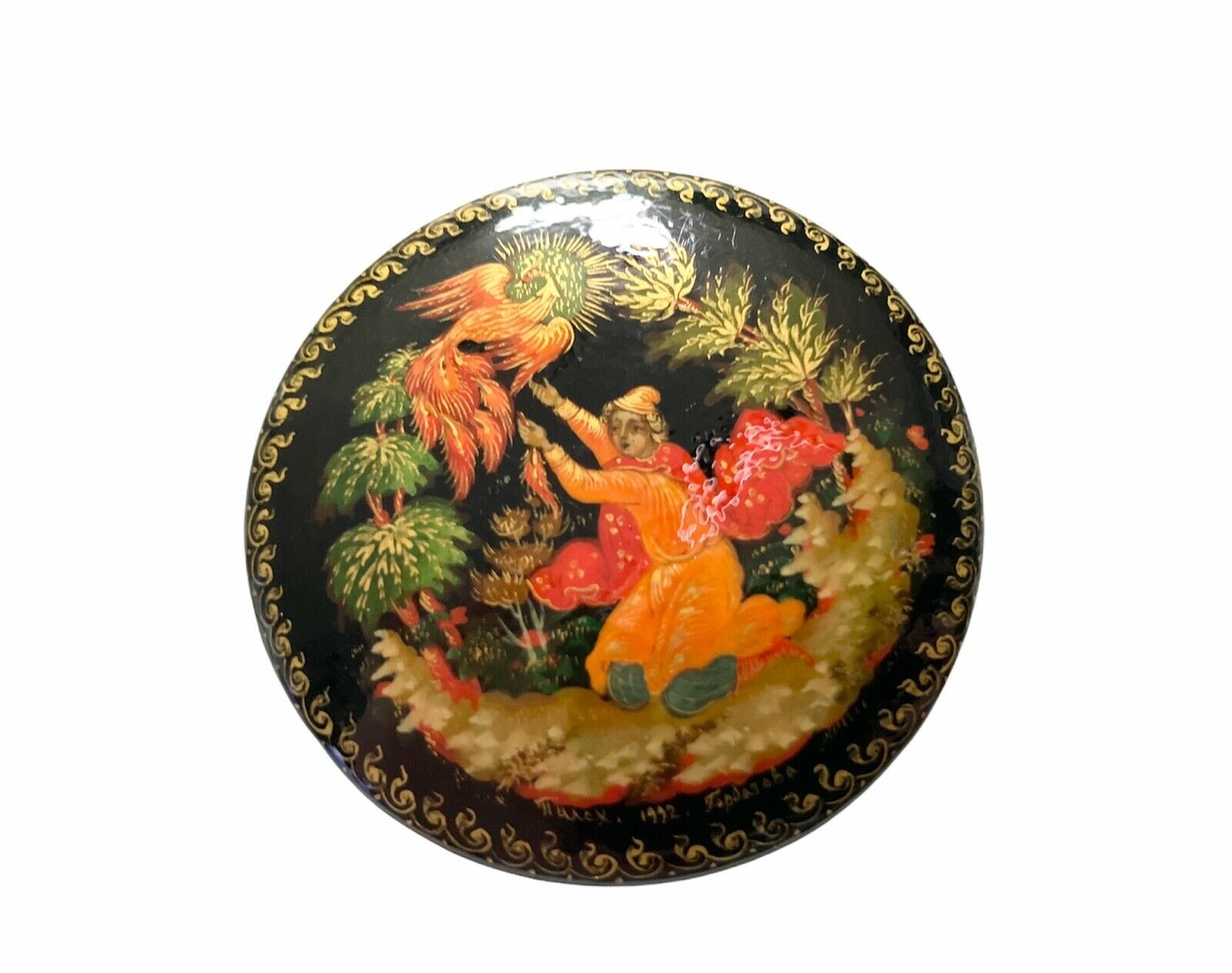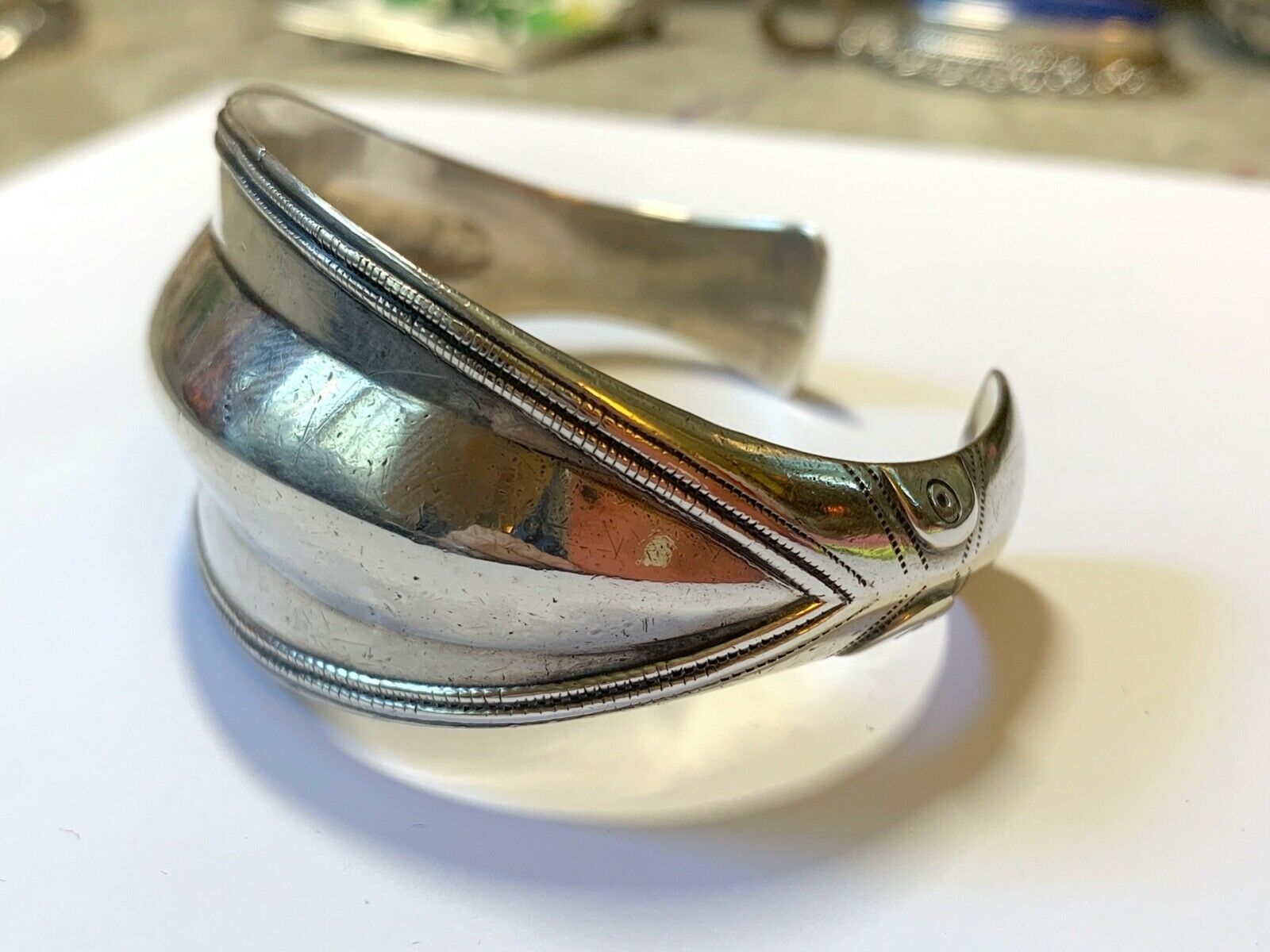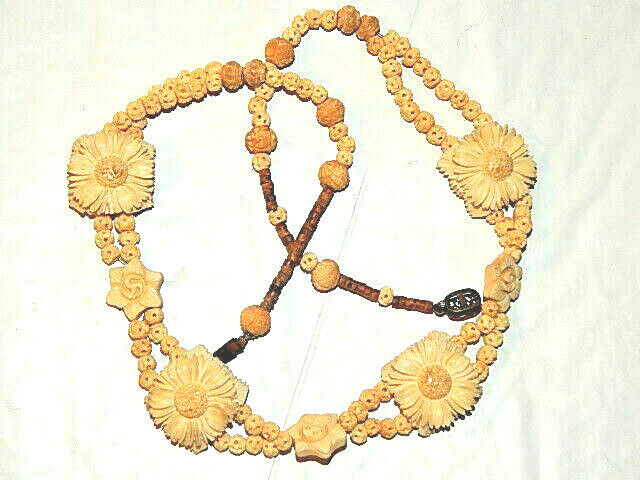-40%
RARE 2/3ct Russian Chrome Diopside Official Gem of President Emblem Mace Ukraine
$ 105.59
- Description
- Size Guide
Description
Excellent Quality Handcrafted Genuine Natural Siberian Two-Third Carat Faceted Forest Green “Yakutsk Emerald” (Chrome Diopside) Oval.CLASSIFICATION:
Chrome Diopside Faceted Oval.
ORIGIN:
Siberia, late 1990’s.
SIZE
: Length: 6mm. Width: 4mm. Depth: 2 3/4mm. All measurements approximate.
WEIGHT
: 0.60 carats.
NOTES
: Upon request we can set your gemstones as a ring, pendant, or as earrings (click
here
for more information).
DETAIL:
A very rare gemstone, though in centuries past found in Italy at Mount Vesuvis, as well as in Finland and Macedonian Greece, today the sole significant source of this fabulous and uncommon gemstone is a mine near the tiny Siberian town of Aldan, on the Inagli River. Given the significance and prominence of this source, it is not surprising perhaps to learn that a chrome diopside gemstone may be found on the ceremonial, official “mace”, emblematic of the authority of the Ukrainian President. Russian/Ukrainian legends of the origin of chrome diopside relate that during a particularly severe blizzard in the Siberian Ural Mountains, a god was flying over the frozen tundra and mountains near Yakutsk, just south of the Arctic Circle. The cold was so intense that his hands became frozen, and he dropped a bag of heavenly green gemstones which until that time had been solely in the dominion of deities. The gemstones he dropped, gorgeous, deeply hued gemstones with “heavenly” flash and sparkle, came to be known as “Yakutsk Emeralds”, or as they are known in the gemological world, “chrome diopside”.
Here is a gorgeous, richly colored forest green chrome diopside semi-precious gemstone which has been cut into a faceted oval. This is a nice quality specimen no less than eye clean. The rich green color is due to trace amounts of the element chromium. Note the brilliance and flashy sparkle. Chrome diopside’s refractive index is twice that of emerald. The gemstone was hand crafted and faceted by a Russian artisan, part of a centuries-old heritage renown for the production of the elaborate gemstones and jewelry of the Czars of Medieval, Renaissance, and Victorian Russia. As might be expected under magnification the gemstone shows the unmistakable characteristics of having been hand crafted. The coarseness of the handcrafted finish is considered appealing to most gemstone aficionados, and is not considered a detriment, or detract from the value of a gemstone.
These characteristics are not only expected of hand-finished gemstones, many believe that such hand-crafted gemstones possess much greater character and appeal than today's mass-produced, laser-cut gemstones. Unlike today’s computer controlled machine produced gemstones that approach flawlessness in a perfect finish, the cut and finish of a handcrafted gemstone such as this is the cultural legacy passed onwards by artisans who lived centuries ago. Handcrafted though it may be the gemstone possesses superb luster and sparkle, and to the eye is completely transparent. However that is not to intimate that it is unconditionally flawless. True, the blemishes it possesses are not visible to the naked eye, and to use trade jargon the gemstone can be characterized as "eye clean". Even in the accompanying photo enlargements there are no discernible blemishes.
To the eye it is indeed flawless; however were one to examine it in a jeweler’s loupe, it’s almost certain that a few minute blemishes could be detected. Of course much the same may said about almost any natural gemstone. An absolutely flawless gemstone simply is not the rule in nature. Most absolutely flawless gemstones will upon close examination be revealed to be synthetic. You might also notice under magnification occasional irregularities in the cut and finish. Naturally these characteristics are absolutely to be expected with hand-finished gemstones. However for most, the unique nature and character of handcrafted gemstones such as this more than makes up for minute cutting or faceting blemishes, which by and large of course, are (if at all) only visible under high magnification.
DIOPSIDE HISTORY:
Gemstone quality diopside is generally found in two varieties, black star diopside and chrome diopside (called “chrome” because trace amounts of the element chromium give chrome diopside its characteristic, rich green color). Star diopside is black or brown in color and is so named because it contains needle-like inclusions that reflects back light and produces a four-ray star on the surface known as an “asterism”, such as that found in star sapphire or star ruby. The gemstone is very abundant in India. Chrome diopside is the only transparent variety of diopside, and the only variety of diopside commonly considered “gemstone grade”. It is most often simply referred to as “diopside” in the trade, rather than “chrome diopside”.
Chrome diopside gemstones are very brilliant, with a lot of sparkle, due to very high refractive index, which is double that of the precious gemstone emerald. There are two other types of diopside which though generally not used in jewelry (as they are opaque) are considered “collectible” stones. There’s a purple type of diopside known as “violane” which is typically found in Italy. Then here is a light, yellow-green stone known as “tashmarine diopside” which is found in Uzbekistan. Diopside derives its name from the Greek “dis”, meaning "two kinds"; and opsis, meaning “faces”, or “appearances” (or “opinions”). Taken together it literally means that diopside has “two kinds of vision” or “two opinions”, or a “double appearance”. It is so named because when viewed from one side it exhibits one color, while from another side it appears differently. This phenomenon is known as “pleochroism”.
Chrome diopside is a very beautiful, sparkling gemstone, but due to the limited quantities in which it is produced has been overlooked for many years by the mainstream jewelry industry. There’s simply not enough supply to make it a worthwhile promotional project, and it is quite difficult to procure this stone. The area of Northern Siberia it is mined from is so rugged, and the winters so loing and bitter, that it only can be produced a few months of each year. Gemstones with an attractive pure green color are generally rare and very costly. Emerald is of course the most valuable and popular green gemstone. Tsavorite garnet and chrome tourmaline also have a rich green color but they are increasingly difficult to find and have become relatively expensive as a result.
Chrome diopside, every bit as beautiful as chrome tourmaline or tsavorite garnet, is found in commercially viable quantities only in the Russian Ural Mountains of Siberia. Given the significance and prominence of this source, it is not surprising perhaps to learn that a chrome diopside gemstone may be found on the ceremonial, official “mace”, emblematic of the authority of the Ukrainian President. Other minor sources of chrome diopside include Australia (including Tasmania), Austria, Antarctica, Canada, China, the Czech Republic, Greece (Macedonia), Outokumpu in Finland, Japan, Norway, Poland, North Korea, Switzerland’s and Italy’s Alps, Slovakia, France, Germany, Finland, Italy (Mount Vesuvius), Madagascar, South Africa, Kenya, and the United States.
Diopside gemstones were certainly used in the ancient world, and have on occasion been uncovered by archaeologists, however few records exist as diopside was not identified as such, and was likely confused with other gemstones such as emerald. There was a tendency for all green gemstones in the ancient world to be identified as “emerald”. This tendency even persisted through the Renaissance. When “chrome tourmaline”, a similarly colored green gemstone was discovered in the seventeenth century by German miners in Brazil, it was enthusiastically received in Europe as “Brazilian Emerald”. Many years passed before it was realized that the “emerald” from Brazil was not, in fact, emerald.
You can imagine with so many sources within what was the classical world (Italy’s Mount Vesuvius, Switzerland, Austria, Norway, Macedonian Greece, Finalnd, Poland, Czechoslovakia, France, etc.), chrome diopside must have been known in the ancient world, even if not widely. So it is almost certain that chrome diopside, though known in the ancient world, must have been misidentified with emerald. Most sources record that the first (“ever”) discovery of chrome diopside was in Siberia, Russia in 1988. Actually, those commonly perceived “facts” are wrong on both accounts. Chrome diopside was not first discovered in Siberia, Russia; and when it was discovered in Siberia, it was actually much earlier than 1988. First, even Russian sources acknowledge that when chrome diopside was discovered in Siberia, it had already been discovered centuries earlier.
Even according to (other) Russian sources, chrome diopside was first found in Italy at the River Ala in the Mussa Valley. The gemstone was known to the Italians as “alalit” (referring to the “Ala” River), or “mussit” (referring to the Mussa Valley or the Italian “Mussa” Alps). There are published references to both mussit and alalit in European sources dating at least as far back as the 1700’s. There are also references to the same gemstone, chrome diopside, as “baikalit”, so named for another source known hundreds of years ago, also in Siberia, Russia, near Lake Baikal (and thus the gemstone was named “baikalit”). And there’s yet another source referred to in European literature of the 1700’s known as “malacolit”, which was found in Finland.
So chrome diopside was not new even to Russians when the deposits presently the source of the majority of the world’s gemstone quality material was discovered in the twentieth century. It had been known centuries before from deposits around Lake Baikal. And even when the present production source was discovered, it was actually discovered well before 1988. It was actually discovered in 1968 by one “Anatoli Mihalovich Korchagin”, who analyzed the gemstone and published his findings as part of his doctoral dissertation within Russia. Mining of the gemstone actually started in 1972, however descriptions of the discovery were not published internationally until 1988, and it was in 1988 that chrome diopside was “discovered” by sources in Western Europe and America. .
However it was in 1968 when the gemstone was discovered near the city of Aldan, on the Inagli River, and so the gemstone is oftentimes referred to in Russian Literature as “inaglit”. In Russia it is more frequently referred to as “Siberian Emerald” or “Yakutsk Emerald” (oftentimes incompletely spelled as “Yakut Emerald” in English-language publications). Recently some Russian producers are trying to use a more marketable name for chrome diopside, now calling it “vertelite”, after the Greek “vert” (for green) and “lite” (for stone). Nonetheless chrome diopside is most commonly referred to as “Yakutsk Emerald” in Russia, so named as the city of Yakutsk is the nearest major city in relation to the source of the gemstone, and it is into that city that the rough crystals are transported after being mined.
Yakutsk is the capital city of the Sakha Republic of Russia, located about 450 kilometers (280 miles) south of the Arctic Circle. Yakutsk is a major port on the Lena River. It is actually best known as being a major supplier of Siberian diamonds. Yakutsk was founded as a fort in 1632, and in 1639 it became the center of the province. Yakutsk is one of the destinations of the Siberian Lena Highway. The city's connection to the highway is only accessible by ferry in the summer, or in the dead of winter, directly over the frozen Lena River, as Yakutsk lies entirely on its western bank, and there is no bridge anywhere in the Sakha Republic that crosses the Lena. The river is impassable for long periods of the year when it is full of loose ice, or when the ice cover is not sufficiently thick to support traffic, or when the water level is high and the river turbulent with spring flooding.
Throughout the history of the ancient world, gemstones were believed capable of curing illness, possessed of valuable metaphysical properties, and to provide protection. Found in Egypt dated 1500 B. C., the "Papyrus Ebers" offered one of most complete therapeutic manuscripts containing prescriptions using gemstones and minerals. Gemstones were not only valued for their medicinal and protective properties, but also for educational and spiritual enhancement. Under what name chrome diopside was known in the ancient world is indeterminable. It was likely misidentified as emerald. It is almost certain that chrome diopside was known in the ancient world, particularly considering that the sources of the gemstone include Mount Vesuvius, the famous volcano which buried Pompeii and Herculaneum.
Found also in Macedonian Greece, nonetheless chrome diopside was not identified in ancient literature, at least by a name which we would recognize as referring specifically to chrome diopside. So history is silent as to how transparent chrome diopside crystals may have been used for healing or for mystic or shamanic purposes. However it is possible that the beliefs which modern practitioners hold pertaining to diopside crystals may reflect more ancient beliefs. It is common for such beliefs to be carried forward in folklore. It’s perhaps of particular relevance to examine Russian folklore pertaining to the gemstone’s attributes and history. According to Russian folklore, “once upon a time”, a long time ago, a god was flying above Yakutsk (the North Ural Mountains) during a blizzard.
The blizzard was so cold that the god’s hands became frozen, causing him to drop a bag of gemstones which fell over the Siberian mountains and tundra. The gemstones of course were chrome diopside. In Russian folk medicine, wearing chrome diopside as an amulet is believed to prepare the body for heavy medications, predisposing the body to absorb the medications more completely and without side effects. It is also believed that worn near the heart as a pendant, chrome diopside is very good for relieving stress, but it is cautioned that if worn too frequently, it will relieve stress to the point where the opposite occurs, the wearer is so relaxed they slip into listlessness and then emotional depression.
In Russia chrome diopside is also credited with bringing overall good health to the wearer, and is regarded as useful for relieving tired eyes. Metaphysically it is said to bestow the wearer with a feeling of freedom and hopefulness. There are even specific prescriptions for the wearing of chrome diopside in the folklore of Russia. Worn on the left hand, set into silver, it is said to be an aid to preventing or recovering from diseases involving the lungs and respiratory system. Worn on the right hand and set in gold, it is said to have a beneficial effect on stomach and digestive disorders. Finally, when worn on the left hand, it is said to engender a more appealing personality for the wearer, and is so recommended to wear on dates and on job interviews.
Though there is not a great deal of literature in American sources pertaining to the medicinal and metaphysical uses for “crystal healing” using chrome diopside, there are some contemporary sources suggest that chrome dipside will aid in the development of the intellectual and analytical skills of the wearer, and to enhance mental clarity. It also said to provide protection from evil and bad memories. Meditation with diopside is said to unlock the secrets of the wearers mind and to help them better understand their innermost self. It is also said to be a helpful stone for magicians and spiritual seekers, revealing the mysterious magic and sacred power of everyday people, places and things that might otherwise be overlooked. It is also said to benefit some sufferers of chronic diseases of respiratory and circulatory systems, and is also said to benefit wearers of the gemstone by cleansing their organs.
Domestic shipping (insured first class mail) is included in the price shown. Domestic shipping also
includes
USPS Delivery Confirmation (you might be able to update the status of your shipment on-line at the
USPS Web Site
). Canadian shipments are an extra .99 for Insured Air Mail; International shipments are an extra .99 for Air Mail (and generally are NOT tracked; trackable shipments are EXTRA).
ADDITIONAL PURCHASES
do receive a
VERY LARGE
discount, typically about per item so as to reward you for the economies of combined shipping/insurance costs. Your purchase will ordinarily be shipped within 48 hours of payment. We package as well as anyone in the business, with lots of protective padding and containers.
We do NOT recommend uninsured shipments, and expressly disclaim any responsibility for the loss of an uninsured shipment. Unfortunately the contents of parcels are easily “lost” or misdelivered by postal employees – even in the USA. If you intend to pay via PayPal, please be aware that PayPal Protection Policies REQUIRE insured, trackable shipments, which is INCLUDED in our price. International tracking is at additional cost. We do offer U.S. Postal Service Priority Mail, Registered Mail, and Express Mail for both international and domestic shipments, as well United Parcel Service (UPS) and Federal Express (Fed-Ex). Please ask for a rate quotation. We will accept whatever payment method you are most comfortable with. If upon receipt of the item you are disappointed for any reason whatever, I offer a no questions asked return policy. Send it back, I will give you a complete refund of the purchase price (less our original shipping costs).
We travel to Russia each year seeking antique gemstones and jewelry from one of the globe’s most prolific gemstone producing and cutting centers, the area between Chelyabinsk and Yekaterinburg, Russia. From all corners of Siberia, as well as from India, Ceylon, Burma and Siam, gemstones have for centuries gone to Yekaterinburg where they have been cut and incorporated into the fabulous jewelry for which the Czars and the royal families of Europe were famous for. My wife grew up and received a university education in the Southern Urals of Russia, just a few hours away from the mountains of Siberia, where alexandrite, diamond, emerald, sapphire, chrysoberyl, topaz, demantoid garnet, and many other rare and precious gemstones are produced. Though perhaps difficult to find in the USA, antique gemstones are commonly unmounted from old, broken settings – the gold reused – the gemstones recut and reset.
Before these gorgeous antique gemstones are recut, we try to acquire the best of them in their original, antique, hand-finished state – most of them centuries old. We believe that the work created by these long-gone master artisans is worth protecting and preserving rather than destroying this heritage of antique gemstones by recutting the original work out of existence. That by preserving their work, in a sense, we are preserving their lives and the legacy they left for modern times. Far better to appreciate their craft than to destroy it with modern cutting. Not everyone agrees – fully 95% or more of the antique gemstones which come into these marketplaces are recut, and the heritage of the past lost. But if you agree with us that the past is worth protecting, and that past lives and the produce of those lives still matters today, consider buying an antique, hand cut, natural gemstone rather than one of the mass-produced machine cut (often synthetic or “lab produced”) gemstones which dominate the market today.
Our interest in the fabulous history of Russian gemstones and the fabulous jewelry of the Czar’s led to further education and contacts in India, Ceylon, and Siam, other ancient centers of gemstone production and finishing. We have a number of “helpers” (family members, friends, and colleagues) in Russia and in India who act as eyes and ears for us year-round, and in reciprocity we donate a portion of our revenues to support educational institutions in Russia and India. Occasionally while in Russia, India, Siam, and Ceylon we will also find such good buys on unique contemporary gemstones and jewelry that we will purchase a few pieces to offer to our customers here in America. These are always offered clearly labeled as contemporary, and not antiques – just to avoid confusion. We can set most any antique gemstone you purchase from us in your choice of styles and metals ranging from rings to pendants to earrings and bracelets; in sterling silver, 14kt solid gold, and 14kt gold fill. When you purchase from us, you can count on quick shipping and careful, secure packaging. We would be happy to provide you with a certificate/guarantee of authenticity for any item you purchase from me. There is a fee for mailing under separate cover. Please see our
"ADDITIONAL TERMS OF SALE."
TRANSLATE
Arabic
Chinese
French
German
Greek
Indonesian
Italian
Hindi
Japanese
Korean
Swedish
Portuguese
Russian
Spanish











